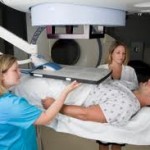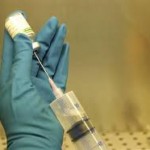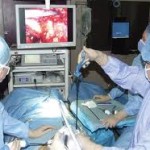Prostate cancer is cancer that affects the man’s prostate gland. Prostate gland is a small walnut-shaped gland that makes seminal fluid that preserves and carries sperm. Prostate cancer is one of the most frequent types of cancer that affects men. Prostate cancer normally develops gradually and primarily stays confined to the prostate gland. This may not be a reason for any severe damage. There are types of prostate cancer that develops gradually and call for minimal or no medical treatment at all. While some types of prostate cancer are aggressive and can multiply rapidly.
Early diagnosis of prostate cancer and still confined to the prostate gland may have a greater possibility of having a favorable treatment.
What are the signs and symptoms of prostate cancer?
Early stages of prostate cancer may not show any signs and symptoms. But an advanced type of prostate cancer may show the following signs and symptoms.
- Difficulty in urinating
- Reduced strength in the stream of urine
- Presence of the blood in urine
- Presence of blood in the semen
- Inflammation in the legs
- Pain in the pelvic area
- Bone pain
What are the causes of prostate cancer?
The real causes of prostate cancer are not yet known. Medical researchers know that prostate cancer begins to develop once several of the cells in the prostate become irregular. These unusual cells may keep on living while the normal cells would expire.  The increasing quantity of the abnormal cells may turn out to be cancer cells and develop to attack near organ. Some of the abnormal cells can split and multiply to other areas of the body.
What is the risk factors affecting prostate cancer?
The following are the risk factors that increase the possibility of having prostate cancer.
- Older men with an age of more than 65 have greater possibility of developing prostate cancer.
- Black men have most increased possibility of prostate cancer of all the races. Â The reason behind this is not yet known.
- If prostate cancer runs in the family you have a greater risk of having it.
- Obese men are more prone to advanced form of prostate cancer that is required of more complicated treatment.
What are the treatments for prostate cancer?
The options for the treatment of prostate cancer may vary on a number of aspects like how much the cancer cells has increases, how rapid its development, the general physical condition of the person affected with prostate cancer, the benefits and possible adverse effects of the treatment.
1.    Radiation therapy
 Radiation therapy makes use of high-powered energy to destroy cancer cells. Radiation therapy for prostate cancer can be in two ways, the external beam radiation and the brachytherapy. The external beam radiation makes use of machine with high-powered energy beams like x-rays directing to the prostate cancer. This treatment usually goes through five days in a week for a number of weeks. The brachytherapy is the insertion of a lot of rice-sized radioactive seeds into the prostate tissue. These radioactive seeds carry a minimal dose of radiation for an extended period of time. This will be implanted inside the prostate with the use of needle directed by the ultrasound images. These radioactive seeds do not have to be removed for it will just end giving off radiation in time.
Radiation therapy makes use of high-powered energy to destroy cancer cells. Radiation therapy for prostate cancer can be in two ways, the external beam radiation and the brachytherapy. The external beam radiation makes use of machine with high-powered energy beams like x-rays directing to the prostate cancer. This treatment usually goes through five days in a week for a number of weeks. The brachytherapy is the insertion of a lot of rice-sized radioactive seeds into the prostate tissue. These radioactive seeds carry a minimal dose of radiation for an extended period of time. This will be implanted inside the prostate with the use of needle directed by the ultrasound images. These radioactive seeds do not have to be removed for it will just end giving off radiation in time.
 2.    Hormone therapy
 The objective of hormone therapy treatment is to let your body stop from making testosterone. Testosterone is the male hormone wherein the prostate cancer cells depend on to help them develop. If the supply of this hormone will be put to an end, the cancer cells will expire or will develop more gradually. There are two choices for hormone therapy; the first one is the medication that will make your body prevent from producing testosterone and the other one is the medication that block the testosterone from getting into the cancer cells. These medications are called anti-androgens. Another way to decrease the level of testosterone is the removal of testicles or known as orchiectomy. The effect of orchiectomy is the same with hormone therapy medication in reducing the level of testosterone. However, orchiectomy reduces the level of testosterone in a more rapid way.
The objective of hormone therapy treatment is to let your body stop from making testosterone. Testosterone is the male hormone wherein the prostate cancer cells depend on to help them develop. If the supply of this hormone will be put to an end, the cancer cells will expire or will develop more gradually. There are two choices for hormone therapy; the first one is the medication that will make your body prevent from producing testosterone and the other one is the medication that block the testosterone from getting into the cancer cells. These medications are called anti-androgens. Another way to decrease the level of testosterone is the removal of testicles or known as orchiectomy. The effect of orchiectomy is the same with hormone therapy medication in reducing the level of testosterone. However, orchiectomy reduces the level of testosterone in a more rapid way.
 3.    Surgical procedure
 Surgical procedure of prostate cancer is the removal of the prostate gland or called radical prostatectomy, some of the surrounding tissue and only some lymph nodes. There are different ways in performing radical prostatectomy such as the retropubic surgery, perineal surgery, laparascopic radical prostatectomy and the robotic laparascopic surgery.
Surgical procedure of prostate cancer is the removal of the prostate gland or called radical prostatectomy, some of the surrounding tissue and only some lymph nodes. There are different ways in performing radical prostatectomy such as the retropubic surgery, perineal surgery, laparascopic radical prostatectomy and the robotic laparascopic surgery.
4.    Cryosurgery
 Cryosurgery or cryoablation is the freezing of tissue to destroy the cancer cells. This treatment makes use of small needles with a very cold gas into it. These small needles are placed in the prostate with the use of ultrasound images as guidance to make the nearby tissue to freeze. Another gas is then placed into the needles to heat up the tissue. The series of freezing and defrosting help to destroy the cancer cells. However, using this treatment for prostate cancer may have an outcome of undesirable side effects.
Cryosurgery or cryoablation is the freezing of tissue to destroy the cancer cells. This treatment makes use of small needles with a very cold gas into it. These small needles are placed in the prostate with the use of ultrasound images as guidance to make the nearby tissue to freeze. Another gas is then placed into the needles to heat up the tissue. The series of freezing and defrosting help to destroy the cancer cells. However, using this treatment for prostate cancer may have an outcome of undesirable side effects.
 5.    Chemotherapy
 Chemotherapy makes use of drug to destroy the fast growing cells which includes the cancer cells. Chemotherapy may be an alternative for cancers that do not react to hormone therapy. Chemotherapy may also be a choice for men affected with prostate cancer wherein the cancer cells have already reached the other parts of the body.
Chemotherapy makes use of drug to destroy the fast growing cells which includes the cancer cells. Chemotherapy may be an alternative for cancers that do not react to hormone therapy. Chemotherapy may also be a choice for men affected with prostate cancer wherein the cancer cells have already reached the other parts of the body.
It is better to have a regular prostate cancer screening particularly if it runs in the family. Early diagnosis will be helpful to have a successful treatment.
